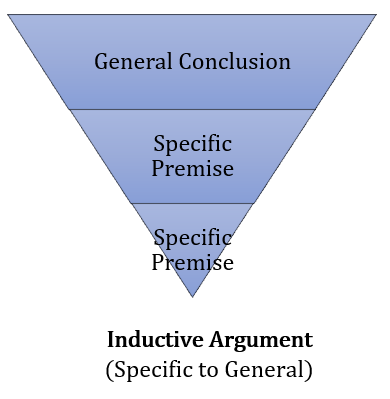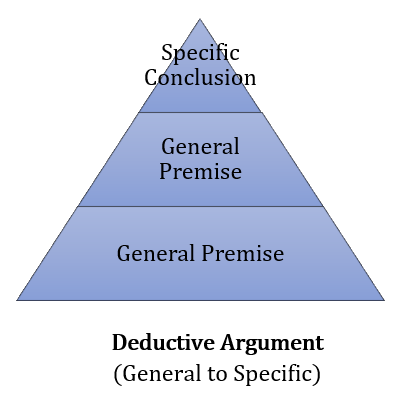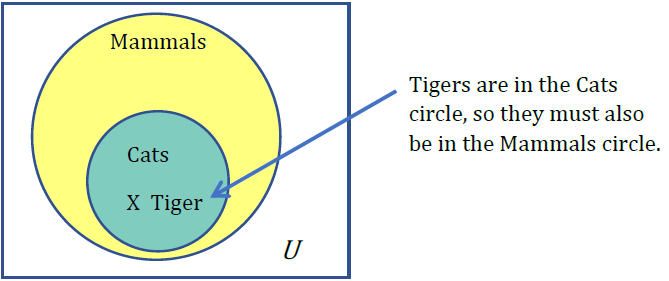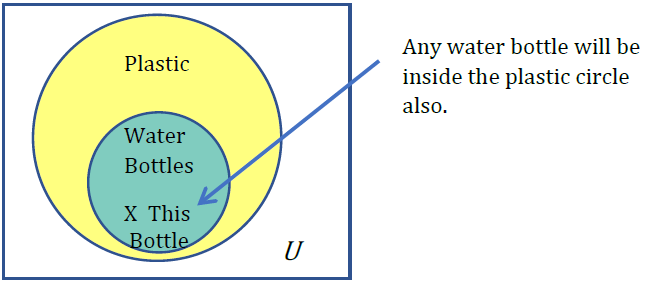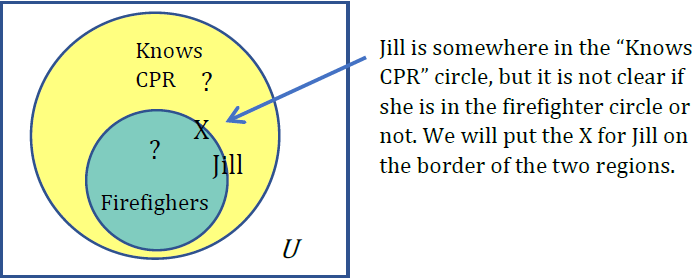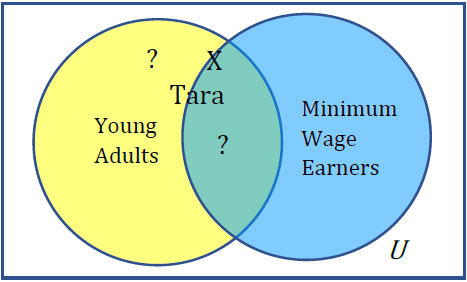Subsection 1.8.2 Inductive and Deductive Arguments
To better understand the difference between inductive and deductive arguments, let’s start by looking at a couple of examples.
Example 1.8.2.
Consider the following argument:
When I went to the store last week, I forgot my wallet, and I forgot it again when I went back today. I always forget my wallet when I go to the store.
Before we analyze an argument, it is helpful to precisely state its premises and its conclusion. Most arguments you encounter in the real world won’t be stated in a precise “premise, premise, conclusion” form. Sometimes the conclusion will be stated before the premises, or the premises will be hidden within a bunch of rhetoric.
To begin our analysis of this first argument, let’s first rewrite it in a more precise “premise, premise, conclusion” form.
Premise: I forgot my wallet when I went to the store last week.
Premise: I forgot my wallet when I went to the store today.
Conclusion: I always forget my wallet when I go to the store.
Notice that both premises make a claim about a specific instance – the specific instance last week when I forgot my wallet, and the specific instance today when I forgot my wallet. The conclusion, on the other hand, states what we can expect to happen more generally.
Now let’s consider a different argument:
Example 1.8.3.
Henry must know CPR because he is a nurse and all nurses know CPR.
Just as we did for the last example, let’s rewrite the argument in its “premise, premise, conclusion” form:
Premise: All nurses know CPR.
Premise: Henry is a nurse.
Conclusion: Henry knows CPR.
Unlike the first argument where the premises were specific and the conclusion was general, this argument’s first premise is a general statement and the conclusion is specific. We can determine whether an argument is inductive or deductive by looking at which part of the argument is general and which is specific. In the first example, the premises were specific and the conclusion was more general. This is an example of an inductive argument. In the second example, it was the premises that were more general and the conclusion that was specific. This is an example of a deductive argument.
In general, an inductive argument uses a collection of specific examples (i.e. data) as its premises and uses them to propose a general conclusion. This is shown in the image on the left below, where the argument moves from the narrow specific premises at the bottom up to the wide general conclusion at the top. A deductive argument uses a collection of general statements (i.e. definitions) as its premises and uses them to propose a specific conclusion. This is shown in the image to the right below, where the argument moves from the wide general premises at the bottom to the narrow specific conclusion at the top.
Example 1.8.4.
Rewrite the following arguments in a precise “premise, premise, conclusion” form, and determine if the argument is inductive or deductive.
A number is prime if it is only divisible by itself and one. Since the number 13 is only divisible by itself and one, 13 must be prime.
Juan’s dog Goober is having puppies. All three of Goober’s previous litters have had 5 puppies so Goober is bound to have 5 puppies in this litter as well.
Solution.
-
Premise: If a number is only divisible by itself and one, the number is prime.
Premise: The number 13 is only divisible by itself and one.
Conclusion: 13 is prime.
Since the premises are general definitions and properties of numbers and the conclusion is a specific statement about the number 13, the argument is deductive.
-
Premise: Goober is having puppies.
Premise: Goober’s last three litters had 5 puppies.
Conclusion: Goober’s current litter will have 5 puppies.
This is an example of an inductive argument since it uses specific experiences/instances as its premises, and its conclusion is a general expectation based on those specific experiences.
Subsection 1.8.3 Evaluating Arguments
Inductive arguments cannot be proven. The best we can do is evaluate the strength of the argument based on the evidence it provides.
A strong inductive argument is one that is well supported by its premises, while a weak inductive argument is one whose premises do a poor job of supporting the conclusion. The strength of an inductive argument is subjective, because where one person sees a strong argument, another may see a weak argument. Additionally, the strength and truth of an argument are not necessarily related; it is possible to have a weak argument that is true, and a strong argument that is false.
Example 1.8.5.
Determine the strength of the inductive argument.
James Franco, Jodie Foster, Jennifer Lawrence, and Jack Nicholson have all won Academy Awards for acting. Actors whose names start with J are bound to win an Academy Award.
Solution.
The inductive argument provides a number of specific cases as evidence for the conclusion. However, we would not be surprised if a J-named actor did not win an Academy Award, so the argument is weak.
Deductive arguments, on the other hand, can be proven and their validity and soundness can be evaluated. The validity of the argument is based on whether the conclusion follows logically from the premises, while the soundness of the argument is based on whether or not the premises are true. An argument cannot be sound if it is not valid, even if the premises seem reasonable.

